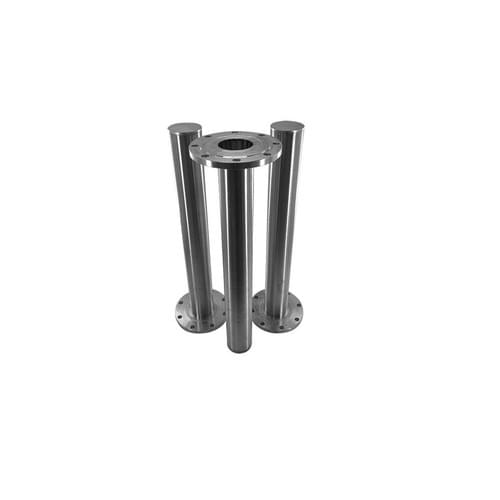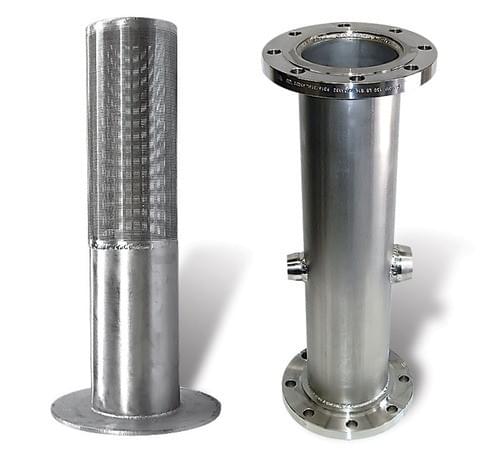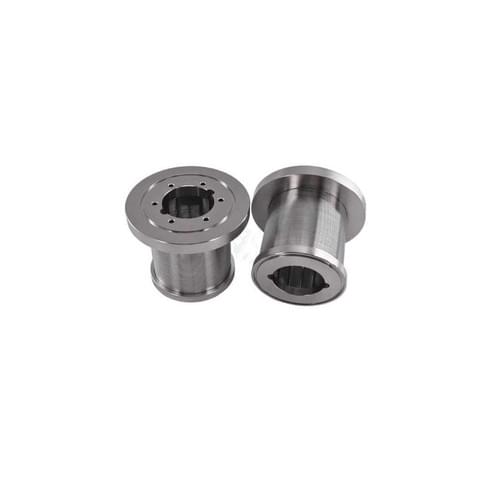
Resin Traps
These resin trap screens are typically closed on one end and feature a flange on the other for easy installation. They are designed with continuous slots and a smooth surface, ensuring efficient filtration. Resin traps can be manufactured for either flow-in-to-out (FITO) or flow-out-to-in (FOTI) filtration, depending on the system’s requirements. With customizable slot sizes, they are capable of capturing even the smallest particle resins.
Resin Traps (Media Traps)
Resin traps, also referred to as media traps, are essential components designed to be installed in both existing and newly constructed strainer bodies. Their primary function is to capture media and resins, preventing them from being lost and traveling downstream, thus protecting the downstream equipment from damage or contamination.
These resin trap screens are typically closed on one end and feature a flange on the other for easy installation. They are designed with continuous slots and a smooth surface, ensuring efficient filtration. Resin traps can be manufactured for either flow-in-to-out (FITO) or flow-out-to-in (FOTI) filtration, depending on the system’s requirements. With customizable slot sizes, they are capable of capturing even the smallest particle resins.
Resin traps are generally constructed from stainless steel, as it offers superior corrosion resistance compared to carbon steel, which is prone to accelerated corrosion in many industrial environments. This makes stainless steel resin traps highly durable and long-lasting in harsh operating conditions.

Resin Trap: A Protective Sieving Device
A resin trap is a simple yet crucial protective device designed to ensure that ion exchange resins or other filtration media do not escape the water treatment system and travel downstream, where they could cause damage or contamination. These traps utilize wedge wire (Vee wire) screens and are installed near the outlet of water system lines, typically housed in either stainless steel or plastic for added protection and durability.
As the resin or filtration media flows through the system, the wedge wire screens intercept and capture any particles. The captured resin can then be automatically discharged from the system by flushing, utilizing the differential pressure between the front and rear of the trap.
The wedge wire screens can be customized with slot sizes ranging from as fine as 20 microns to as large as 3000 microns, catering to various filtration fineness requirements depending on the specific application.
Popular Specifications of the Resin Trap:
- Material: Stainless steel or plastic housing
- Slot Size: 20 microns to 3000 microns
- Design: Wedge wire screens for efficient capture
- Installation: Near water system outlets for optimal protection
- Application: Water treatment systems to prevent downstream contamination

Features of Resin Trap Wedge Wire Screens
1. High Mechanical Strength: Designed to withstand large pressure drops, the screens offer excellent durability, making them suitable for high-pressure applications.
2. Wedge-Shaped Slots: The unique wedge-type slot design enhances backflushing and regeneration performance, ensuring efficient cleaning and extended service life.
3. Resistance to Harsh Conditions: Built to resist pressure, temperature variations, aging, and corrosion, these screens are suitable for a wide range of fluids and operating environments.
4. Consistent Slot Size: The uniform slot distribution ensures precise filtration, forming an evenly distributed filter cake that is easy to clean and reuse, promoting long-term efficiency and cost savings.


Applications of Resin Traps
Resin traps, also known as media traps, are essential components for protecting resin and media-based water treatment systems. They should be installed in the product water lines of systems such as softeners, dealkalizers, condensate polishers, demineralizers, carbon filters, sand filters, portable DI tanks, greensand filters, and multi-media filters. By capturing stray media or resin, they prevent downstream contamination and equipment damage.
Additionally, resin traps are highly recommended for the backwash lines of ion exchange and carbon systems. Temperature-related flow fluctuations can cause expensive media to be inadvertently flushed down the drain, making resin traps a vital safeguard in these systems to minimize material loss and maintain operational efficiency.





